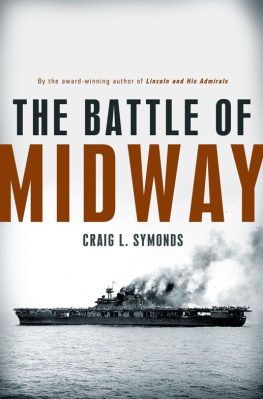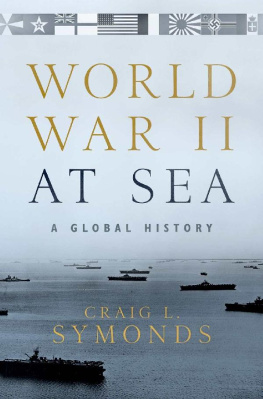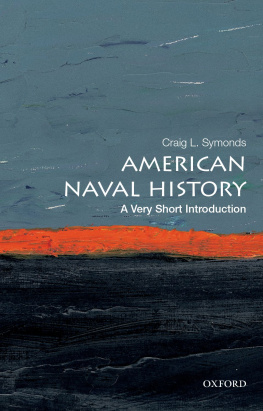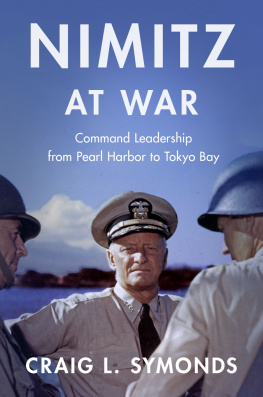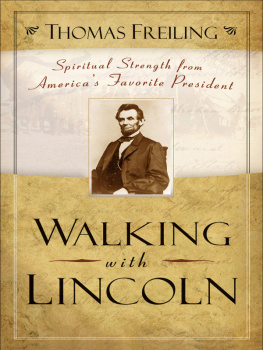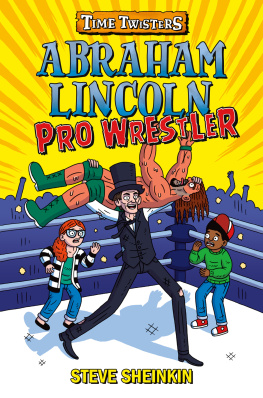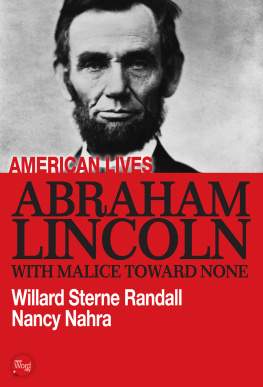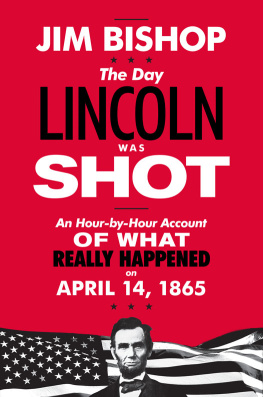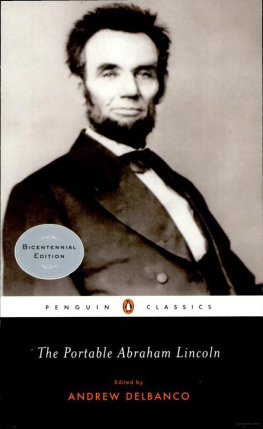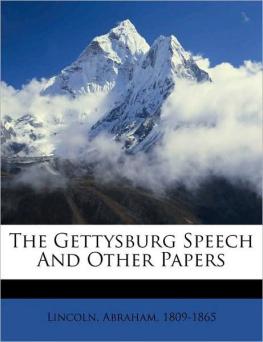Exploring LincolnThe Norths Civil War
Andrew L. Slap, series editor

A LINCOLN FORUM BOOK
Exploring Lincoln
Great Historians Reappraise
Our Greatest President
EDITED BY
Harold Holzer, Craig L. Symonds,
AND
Frank J. Williams
Frontispiece: Abraham Lincoln, ca. 1863, photograph by Lewis E. Walker, Washington, D.C. (Library of Congress)
Copyright 2015 Fordham University Press
All rights reserved. No part of this publication may be reproduced, stored in a retrieval system, or transmitted in any form or by any meanselectronic, mechanical, photocopy, recording, or any otherexcept for brief quotations in printed reviews, without the prior permission of the publisher.
Fordham University Press has no responsibility for the persistence or accuracy of URLs for external or third-party Internet websites referred to in this publication and does not guarantee that any content on such websites is, or will remain, accurate or appropriate.
Fordham University Press also publishes its books in a variety of electronic formats. Some content that appears in print may not be available in electronic books.
Visit us online at www.fordhampress.com.
Library of Congress Cataloging-in-Publication Data
Exploring Lincoln : great historians reappraise our greatest president / edited by Harold Holzer, Craig L. Symonds, and Frank J. Williams. First edition.
pages cm. (The Norths Civil War)
Includes bibliographical references and index.
ISBN 978-0-8232-6562-6 (cloth : alk. paper)
ISBN 978-0-8232-6563-3 (pbk. : alk. paper)
1. Lincoln, Abraham, 18091865Influence. 2. United StatesPolitics and government18611865. 3. Political leadershipUnited States
History19th century. 4. PresidentsUnited StatesBiography.
I. Holzer, Harold, editor, author. II. Symonds, Craig L., editor, author.
III. Williams, Frank J., editor, author.
E457.E96 2015
973.7092dc23
2014033578
First edition
Contents
Introduction
Harold Holzer, Craig L. Symonds, and Frank J. Williams
HE IS BOTH UBIQUITOUS AND ENIGMATIC. HE IS AS FAMILIAR as the penny and the five-dollar bill: at once instantly recognizableyet he is elusive as a chimera. The historical Lincoln, the literary Lincoln, even the cinematic Lincoln, have all proved both fascinating and irresistible. Though some sixteen thousand books have been written about him and more than a dozen major motion pictures (including one depicting him as a vampire hunter) have been released, there is always more to say, new aspects of his life to consider, new facets of his persona to explore.
The Lincoln Forum, a national organization with more than one thousand members, meets in Gettysburg each fall on the anniversary of Lincolns most famous speech, to provide (as its name suggests) a public forum for these considerations. This volume offers a selection of sixteen of the papers that have been presented at this annual meeting over the past three years. They are arranged more or less chronologically, beginning with a reconsideration of Lincolns 1860 campaign, by William C. Harris, and ending with an essay about the psychological demons of his wife Mary Todd Lincoln, by Jason Emerson. Yet the purpose of this volume is not to provide yet another biography of the sixteenth president or even a history of his presidency. It is, rather, to shine a light on particular aspects of Lincoln and his sadly abbreviated presidency in the hope that these essays will provoke new thinking, new scholarship, and new understanding.
Several of the essays deal with Lincoln as a commander-in-chief. This is hardly surprising considering that his entire presidency was dominated by the most traumatic war in our nations history. John Marszalek looks at the tool Lincoln was handed upon the outbreak of war. The prewar army (ever after called the Old Army) was a small constabulary force located almost exclusively on the western plains or the coastal forts. This had to be converted into a tool for fighting and winning a continental struggle along a thousand-mile front. John Waugh examines Lincolns difficult, even maddening, relationship with McClellan, who commanded this new mass army from the summer of 1861 to the fall of 1862. William C. Jack Davis offers a thoughtful look at Lincolns counterpart, Jefferson Davis, to illuminate Daviss relationship with his principal general, Robert E. Lee. One can only imagine how different events might have been if Lincoln had had Lee to command his armies and Davis had been saddled (no pun intended) with McClellan. Craig Symonds looks at how Lincoln sought to manage the men who ran the Union Navy.
Other essays in this volume deal with Lincoln as a political animal. Despite the nineteenth-century hagiography that sought to elevate Lincoln into a demigod above mere politics, recent scholarship has demonstrated conclusively that Lincoln was an active politician, that he cared about politics, even at the local level, and that he was ever sensitive to the influence of other events on the political balance of power. William C. Harris profiles Lincolns role in the election of 1860 that made him president. Sewards biographer, Walter Stahr, explores Lincolns relationship with the man some called the Premier of the administration, and Harold Holzer explores Lincolns curious and sometimes fraught relationship with politics in Sewards New York.
Of all the issues Lincoln had to deal with as president, surely the most important, and the most difficult, was the slavery question. Lincoln hated slavery. Nevertheless, politician that he was, he knew that if he moved too fast against it he might alienate both the War Democrats in the North and the border states, and he was convinced that he needed both on his side to save the Union. On the other hand, if he moved too slowly, he might miss a priceless opportunity. How Lincoln used his sensitivity as well as his political skill to balance these pressures is the subject of three superb essays by Eric Foner, Amanda Foreman, and Richard Striner.
Other issues in this volume range over a wide spectrum. Frank Williams combs through Lincolns law cases to assess him as a bench judge. Michael J. Kline offers a reconsideration of the so-called Baltimore Plot: Was there, in fact, a credible threat to the president-elect in Baltimore as he made his way to Washington? John Stauffer offers a fascinating look at the origins and cultural significance of Julia Ward Howes Battle Hymn of the Republic, and Barnet Schecter investigates the origin and the effects of the New York City draft riots in July 1863 after the Battle of Gettysburg. Finally, Catherine Clinton offers a thoughtful analysis of how the more than seven hundred thousand deaths during the war gave new meaning to mourning in nineteenth-century America.
The editors hope that readers of this volume will be inspired to read more not only about Lincoln but also to read Lincoln himself, for there is no better window into understanding Americas greatest president than a careful reading of his own written work.
Lincolns Role in the 1860 Presidential Campaign



